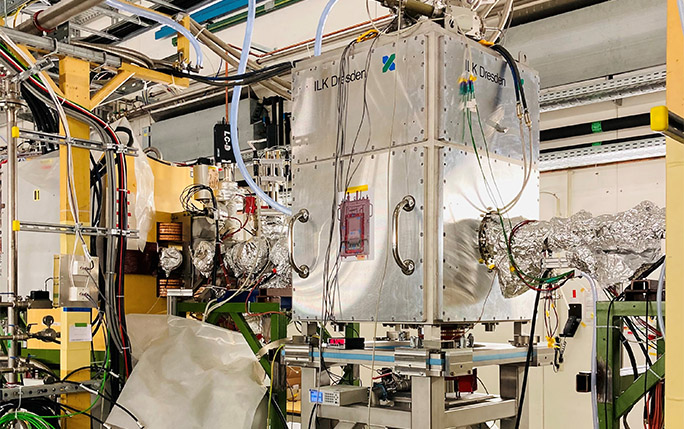First beam for the Cryogenic Current Comparator at CRYRING

AVA Fellow David Haider is based at the Beam Instrumentation group at GSI carrying out Ultra-sensitive Beam Intensity Measurements. Within this project a Cryogenic Current Monitor is being developed to allow versatile non-destructive intensity monitoring in storage rings and transfer lines with great precision, which benefits a wide range of areas from an improved control during antimatter production to a new level of online dose monitoring in radiation therapy.
As part of this work David introduced an absolute DC beam current measurement for beam intensities below 100 nA that are stored at the low energy storage ring CRYRING. In November 2020, he helped to install the Cryogenic Current Comparator (CCC) system, which included a helium cryostat and a liquefier unit, at the CRYRING.
This month, the FAIR CCC monitored weak beams of Ne3+ with stored beam intensities of a few nA throughout the whole accelerator cycle. The signal is calibrated with a standardized electric current to obtain absolute intensity values. Thus, at low beam intensities the signal of the CCC can be used to calibrate other instruments like Beam Position Monitors (BPMs) or Ionisation Profile Monitors (IPMs) that typically require elaborate studies to obtain absolute intensities. In addition to this, the CCC can operate with coasting beam where other devices become insensitive.
David then went on to collect first data during the beam time in December in which beams of D+, Ne3+ and Ne4+ were characterized and the lifetime of the stored neon ions will be estimated.
“After all the struggles to bring the CCC system to CRYRING in time, the recent beam time turned out to be a great success”, adds David before he starts his Christmas vacation. The machine operators, but especially the experiments, will profit from the low intensity data that is now available at CRYRING@FAIR.